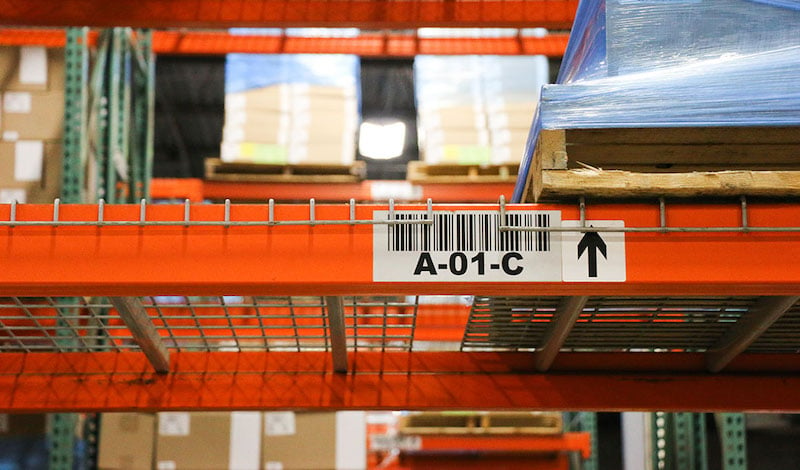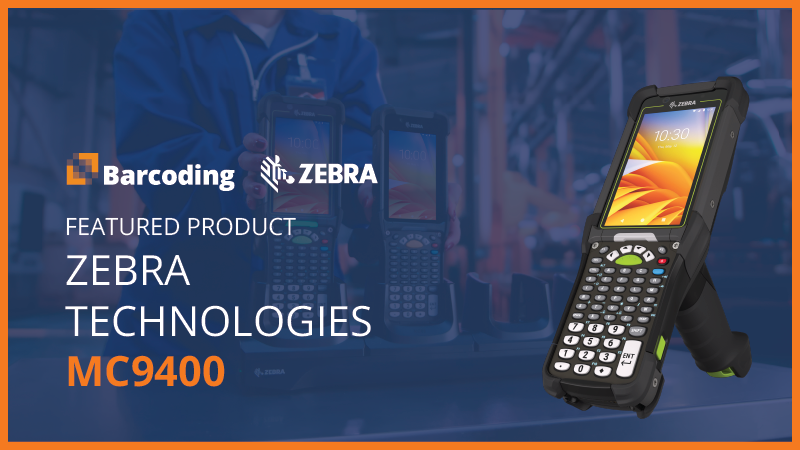When you consider the thousands—in some cases, tens of thousands—of items moving in and out of a typical warehouse every day, the ongoing urgency around improving efficiency and accuracy is obvious; it’s not much of an overstatement to say that without systems and tools in place to optimize operations, chaos ensues. Fortunately, there’s an easy, effective way to track and manage assets: warehouse labeling system.
By labeling containers, aisles, racks, and bins within the warehouse—and of course the items on and in them—workers can quickly locate the right items, at every point throughout your facility (and when widely deployed, the entire supply chain). The technology that enables this visibility is fairly simple and includes two primary components: barcode labels and barcode scanners.
- Labels: Labels, which can be printed on mobile printers, feature a barcode that contains a variety of useful product data
- Scanners: Wireless barcode scanners in the hands of workers allow them to quickly locate and pick the right inventory and conduct cycle counts, and gather valuable data about products, the warehouse, and the supply chain
Where Do I Use Warehouse Labels?
When looking for a specific item in the warehouse, a worker will start with “the big picture” and identify the right rack, then continue to refine their search to shelf, bin, and product.
- Racks: Labels identifying racks are the most common because even warehouses with a modest amount of inventory see timesaving and accuracy benefits. There are several types of rack labels, including magnetic labels designed to stick on metal surfaces, and those designed specifically for harsh environments, like cold storage.
- Shelves: Once the correct rack has been located, every shelf on that rack is labeled with a barcode to help workers narrow their searches
- Bins & totes: If items are contained on the shelves in bins or totes, these are also labeled to further refine the search
- Products: Whether free-standing or binned/toted, every distinct asset within the warehouse can be labeled for identification. When scanned, data contained within the label’s barcode is read by the scanner and can be sent directly to the system for analysis and insight-gathering. Information might include date of manufacture, source, size, cost, handling requirements, expiration date, and dozens of other data points.
Types of Warehouse Labels
There are several types of labels, and the one that’s right for your warehouse and its assets will depend on your warehouse and its assets, and your specific goals.
- Magnetic: Magnetic labels are the best choice when the warehouse configurations change frequently, as they’re easy to remove and reaffix to another rack
- Removable: Affixed using a tacky (though not permanent) adhesive, these labels are simple to place and remove when needed
- Permanent adhesive: Permanent adhesive labels are applied to items that require a one-time label. While the adhesive is considered permanent, though, an excessive amount of moisture or exposure to solvents—even extreme temperatures—could dilute the effectiveness of the adhesive
There are also different types of barcode scanners, and they fall into one of two categories (generally speaking): short-range and long-range. Short-range scanners work best when workers are typically able to hold the scanners just a few inches from items being scanned. In large warehouses, that’s usually not practical or efficient. Long-range scanners are more practical for large-scale operations, and in environments that are hazardous, such as freezer storage areas. Long-range scanners can read barcodes up to 45 feet away, making it easy (and safer) to scan items high on racks, and they make cycle counts much faster.
The right handheld scanner for your operation will depend on the nature of your facility, how you’ll use the hardware, any limitations (physical or other), and your workforce. Both types are usually put to use within the same facility though, because there are appropriate use cases for each.
Benefits of Warehouse Labeling
Labeling is the key to complete asset visibility, tracking, and control, and leads to improvements in:
- Accuracy. Having racks, shelves, bins, and assets properly labeled eliminates the costly errors that otherwise occur when doing manual inventory tracking
- Handling. Without key product data, items could easily be mishandled. Expiration dates, security requirements, cautions, and other data can be part of the barcode, ensuring that the right steps are taken to prevent waste/reduce loss
- Inventory mix. Barcode data about turns and volume help identify which products are slow-moving and which are chronically understocked, making it easy to stock accordingly
- Space utilization. Rack and shelf barcodes can open your eyes to underutilized areas within the facility; with that information, you can adjust layouts to make optimum use of the space
- Productivity and time savings. Labeled warehouse racks reduce the amount of time workers are spending searching for the items they need, and eliminate “mis-picks”—grabbing the wrong product
Planning Your Warehouse Labeling System
If you’re planning a new warehouse or distribution center, or expanding your existing facility, the first step in deploying a warehouse labeling solution is to identify an experienced partner to work with. The value of their knowledge and insights are significant, and will help you avoid missteps, mis-spends, and unnecessary delays.
It’s important, too, that you engage this partner sooner rather than later; if you wait too long, their ability to provide insights that’ll save you time and money is somewhat reduced. The best vendor partners first work to thoroughly understand the challenges you face, what you’re looking for, and what you hope to achieve. Knowing that, they’ll want to understand your workers, workflows, network, and bandwidth so they can identify the best solution for you, and the resources you’ll need both during implementation and ongoing.
Ready to put labels to work making your warehouse (and people) more efficient? The team at Barcoding would love to hear more about your business and your warehouse, and help develop the right labeling solution for your needs. Click the link below to start the conversation!






